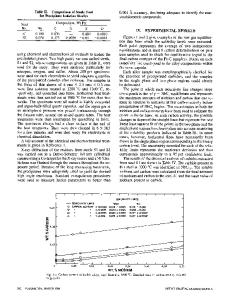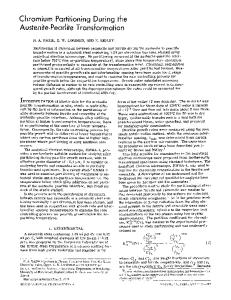Interactive formation of Cu-rich precipitate, reverted austenite, and alloyed carbide during partial austenite reversion
- PDF / 887,730 Bytes
- 10 Pages / 584.957 x 782.986 pts Page_size
- 37 Downloads / 311 Views
nwei Li Institute of Materials Modification and Modelling, School of Materials Science and Engineering, Shanghai Jiao Tong University, Shanghai 200240, People’s Republic of China
Jianfeng Gua) Institute of Materials Modification and Modelling, School of Materials Science and Engineering, Shanghai Jiao Tong University, Shanghai 200240, People’s Republic of China; and Collaborative Innovation Center for Advanced Ship and Deep-Sea Exploration, Shanghai Jiaotong University, Shanghai 200240, People’s Republic of China (Received 30 November 2016; accepted 31 March 2017)
We address the competitive precipitation and coprecipitation of three types of secondary phases, i.e., Cu-rich precipitates (CRPs), reverted austenite (RA), and alloyed carbide, in a high-strength low-alloy steel with austenite reversion treatment at 675 °C by using electron back-scatter diffraction, transmission electron microscopy, and atom probe tomography. There is a strong competitive diffusion of Ni and Cu participating in austenite reversion and Cu precipitation with the fact that no CRPs are detected in and around the RA. Meanwhile, there is also a strong competitive diffusion of austenite stabilizing element Ni and carbide-forming elements Cr and Mo into the pre-existing C-rich zone, leading to the formation of nonequilibrium alloyed carbide deviating from the stoichiometric composition. On the other hand, the alloyed carbide and CRPs provide constituent elements for each other and make the coprecipitation thermodynamically favorable. The knowledge on the interactive formation of these three features provides versatile access to tailor the distributional morphology of CRPs, RA, and alloyed carbide via a multistage heat treatment and thus realize their beneficial effect on strength and toughness.
I. INTRODUCTION
High-strength low-alloy (HSLA) steels are of significant importance due to their excellent combined strength and toughness that enables them to be widely used in the transportation, infrastructure, and defense industries.1–3 The steels are usually thermomechanical processed or quench-temper (QT) treated to obtain aimed mechanical properties. During QT treatment, the strength, in addition to arising from (tempered) dislocated lath martensitic structure, is mainly resulted from the precipitation hardening of highly dispersed nanoscale Cu-rich precipitates (CRPs) formed during the tempering process.4 However, strength and toughness always have an inverse relationship.5 The nanoscale CRPs that contribute to the maximum
Contributing Editor: Jürgen Eckert a) Address all correspondence to this author. e-mail: [email protected] DOI: 10.1557/jmr.2017.149
strength are also often responsible for the degradation of toughness, although the coherent, coplanar Cu-rich clusters/precipitates that act as ‘misfit centers’ are possibly beneficial to toughness by improving the mobility of dislocations.6 Hence, efforts have been made to introduce reverted austenite (RA) into the steels via intercritical heat treatment (IHT) (or partial austenite reversion treatmen
Data Loading...











